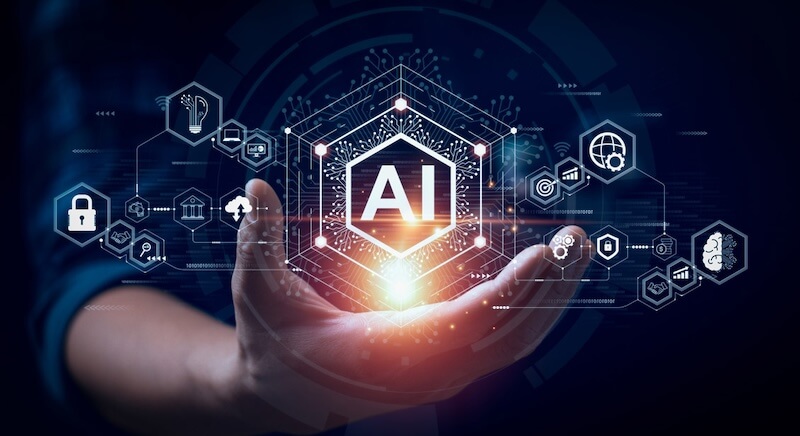The rise of Artificial Intelligence (AI) is poised to dramatically reshape the landscape of electricity consumption in the United States, with data centers at the heart of this transformation. Fueled by the increasing demands of AI applications, data centers are projected to become a major driver of electricity demand growth in the coming years, potentially accounting for almost half of the total increase by 2030. This surge raises both opportunities and challenges for the energy sector, technology companies, and policymakers alike.
Several factors contribute to this escalating demand. AI models, especially generative AI like GPT-4, are becoming exponentially larger and more complex, requiring vast computational resources for training and operation. This translates directly into higher energy consumption within data centers, where these AI models reside. For example, processing a million tokens, a unit of text used by generative AI, consumes energy that equates to driving a gas-powered vehicle five to twenty miles. Training large AI models can consume as much energy as powering 100 homes for a year.
The impact of this trend is particularly pronounced in the United States. Projections indicate that by 2030, the US will consume more electricity for data processing than for manufacturing energy-intensive goods such as aluminum, steel, cement, and chemicals combined. This shift underscores the growing importance of data centers in the US economy and the need to address their energy footprint. The US data centers are consuming more electricity than ever before. In the third quarter of 2024, their power demand reached 46,000 megawatts (MW). According to S&P Global forecasts, this demand will grow to 59,000 MW by 2029.
The global picture reflects a similar trend. The International Energy Agency (IEA) estimates that worldwide electricity demand from data centers could more than double by 2030, reaching approximately 945 terawatt-hours (TWh), which is slightly more than the entire electricity consumption of Japan today. AI is expected to be the most significant driver of this increase, with AI-optimized data centers projected to quadruple their electricity demand by 2030.
However, it is important to note that the rise in electricity demand from data centers is not uniform across the globe. The United States is expected to account for the largest share of this increase, followed by China. Other regions with significant data center activity, such as Ireland, are also experiencing a substantial increase in electricity consumption from these facilities.
This surge in electricity demand has several implications. First, it puts a strain on existing power grids, requiring significant infrastructure upgrades to ensure a reliable and stable electricity supply. Second, it raises concerns about the environmental impact of data centers, particularly regarding greenhouse gas emissions and water consumption. Data centers rely on substantial amounts of water for cooling, which can strain local water resources, especially in already water-stressed regions.
Despite the challenges, the rise of AI and data centers also presents opportunities for innovation and sustainability. One key area is energy efficiency. AI itself can be leveraged to optimize energy usage within data centers, dynamically allocating resources based on computing demands and improving the efficiency of cooling systems. For instance, Google's DeepMind AI has been shown to reduce cooling costs in data centers by as much as 40%.
Another promising avenue is the adoption of renewable energy sources to power data centers. Tech companies are increasingly investing in wind, solar, and other renewable energy projects to offset their growing energy footprint and reduce their reliance on fossil fuels. The U.S. Department of Energy is also encouraging the development of AI data centers on federal lands, with an emphasis on utilizing renewable energy sources.
Moreover, advancements in chip technology and data center design are contributing to improved energy efficiency. Modern AI chips are significantly more energy-efficient than their predecessors, and new cooling technologies are being developed to reduce water consumption. "Power-positive" data centers can contribute to community-wide energy efficiency improvements, such as upgrading local schools or hospitals.
However, some analysts suggest that the demand for AI might not need as many powerful computers as expected. Microsoft, for instance, is slowing or pausing some of its data center construction, indicating that the anticipated massive infrastructure expansion might be adjusted based on evolving needs and technological advancements.
The environmental impact of AI extends beyond energy consumption. The production of AI hardware requires critical minerals and rare earth elements, which are often mined unsustainably. Data centers also generate electronic waste, which can contain hazardous substances. To mitigate these impacts, it is crucial to promote sustainable mining practices, improve e-waste recycling, and design AI hardware with greater durability and recyclability.
Addressing the environmental challenges posed by AI and data centers requires a multi-faceted approach involving collaboration between governments, technology companies, and researchers. This includes setting energy efficiency standards for data centers, promoting the use of renewable energy, investing in research and development of energy-efficient AI technologies, and implementing policies to reduce e-waste and promote sustainable resource management.

















